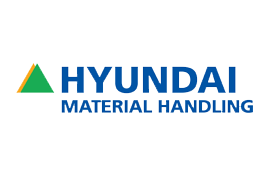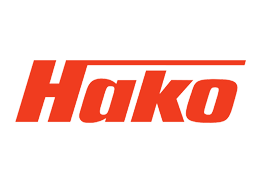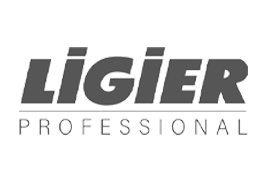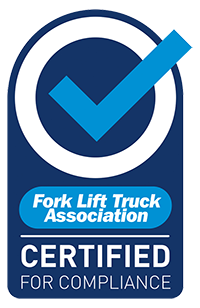The FLTA’s top tips will help you navigate the potential pitfalls…
Buying a used forklift truck can be an affordable way for companies – particularly smaller ones – to fulfill their materials handling requirements. However, used equipment comes with its own risks that could, potentially, cost customers dearly in the long run.
01. Make sure the truck is suitable for your application
To the uninitiated, forklift trucks might seem like much of a muchness. However, they can vary enormously from model to model and according to how they’re kitted out. Is your truck going to be used regularly? Will it be working indoors, outdoors, or both? What tasks will it be performing? How heavy will its loads be? Are there environmental restrictions on noise or fumes? How much space will the truck have to manoeuvre? Is the mast tall enough to reach the highest shelves? Is the mast low enough to fit beneath the lowest doors and ceilings? All this must be considered when choosing the right truck.A reputable dealer will offer to inspect your site and application to ensure that the truck they provide is appropriate to your needs. Online retailers are far less inclined to do so. As his/her employers, the safety of the truck operator is your responsibility. Getting the wrong equipment could end badly in terms of damage, accidents, fines and, in the worst case, even imprisonment.
TIP: Get a reputable dealer, who is accredited to a trade association and works to a nationally approved Code of Practice, to inspect your site and quote for both new and used trucks. This will grant you a clear picture of what you require and prices.
02. Conduct a visual inspection
One of the clear disadvantages of buying online is that you’re relying on the seller’s images and description. A visual inspection should look for any rust, damage, or indications of an underlying fault – such as cracks, repair welding, or fluid leaks.
03. Take it for a test drive
Buying a second-hand FLT is much more serious than buying a second-hand car. It is a potentially dangerous and quite complex piece of equipment and is covered by strict legislation. You’d be foolish, therefore, to hand over the cash without ensuring it works first. Give the truck a test run or, if unqualified yourself, have an operator do so. Ensure all the trucks functions work as they should. As with a car, it’s important to ensure that and engine powered forklift starts from cold, since many problems will not be apparent on a warm engine.
TIP: Conduct your tests over a clean floor. Afterwards, check for tell-tale drips which will indicate potentially costly leaks from the hydraulics or transmission. Check the colour of the exhaust fumes.
04. Inspect the warranty
A good warranty is crucial when buying a second-hand truck. It’s important that you know how long your warranty period lasts, what it covers and – significantly – what is excluded. If a truck is sold while still within a manufacturer’s warranty, contact the company to ensure the warranty is transferred – while some can be transferred, others are exempted upon resale.
05. Make sure the truck is not a dodgy import
There are a growing number of rogue imports on the second-hand forklift market and it’s vital that you avoid them. Not only are they hard to source parts for and hard to sell but, in the event of an accident, such a truck could even invalidate your insurance. Ensure the truck you’re looking to buy has a genuine CE mark. Additionally, make sure that the identity plate, operator manual, CE Certificate, and all labels and warnings, are in the correct language.
06. Ask to see the Certificate of Thorough Examination
A Thorough Examination inspection ensures vehicles comply with LOLER and PUWER regulations. However, like a car MOT, it doesn’t check everything and, as such, shouldn’t be solely relied on when assessing a forklift’s condition. Importantly, every truck is legally required to hold a current Certificate of Thorough Examination and, as soon as you take possession, it is your responsibility – so check that it has one! If in doubt about a truck’s health, request an independent Thorough Examination be conducted before you buy. To ensure the inspection really is thorough, the Forklift Truck Association recommends using an examiner accredited by Consolidated Fork Truck Services (CFTS).
07. If buying an electric truck, make sure there’s life left in the battery
Forklift batteries are expensive. In fact, the battery can be worth more than 40% of the machine’s total value. As such, it’s really important that there’s plenty of mileage left in the cells of any truck you’re looking to buy. As a rule of thumb, the average FLT battery will last 1200 charges and each charge will provide approximately 5 hours of run-time. So, by dividing the equipment’s clocked hours by five, you can get a rough idea how much life the battery has remaining.
TIP: Don’t forget to visually inspect the battery. For extra peace of mind, get separate warranty cover for your battery and consider asking a battery supplier to test the battery for you.
08. Double check the clock readings
Whereas a car’s working life is assessed through mileage, a forklift’s is judged through operating hours. Forklift experts estimate that one hour of truck use is the equivalent to driving a car 30 miles. By this reasoning, a truck that has done over 3000 hours is nearing the car equivalent of 100,000 miles. Unfortunately, like cars, clocks can be tampered by unscrupulous dealers. As such, it is advisable to check the stated hours against the service history.
09. Is your mast fit for purpose?
First and foremost, it’s critical that the mast of your truck is appropriate for your application. Of course, it’s crucial that your new truck be able to reach the heights required but, just as important (yet often overlooked) is whether it will fit under doorways and the lowest ceilings in your operating area. For low-ceiling and trailer work, you’ll need to consider the mast type and how much free lift it provides – the distance the forks can raise before the next section of mast extends. Equally, the mast must be inspected for costly wear and tear. Flaking residue is a sign that improper wear is occurring, while lubrication – not usually required of a healthy forklift mast as it attracts detritus – could be a sign that the owner is compensating for a fault. Make sure you watch the mast in operation and ensure it all extends smoothly. Pay attention to the rollers and ensure that they run true and don’t stick (a sign of missing or worn bearings).
10. Check the rating plate
The rating plate is a crucial feature of any lift truck – it tells you how much your truck can safely lift. As such, it plays an important role in the safety of your workplace. When buying a used truck, you must ensure that the data on it is fitted, legible and correct. Additionally, when buying materials handling equipment, ensure the rated capacity is slightly higher than the maximum load you expect to carry.
Click here to view our approved used equipment.








